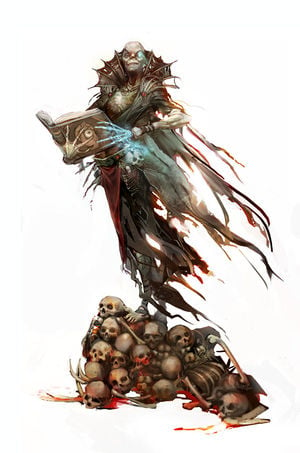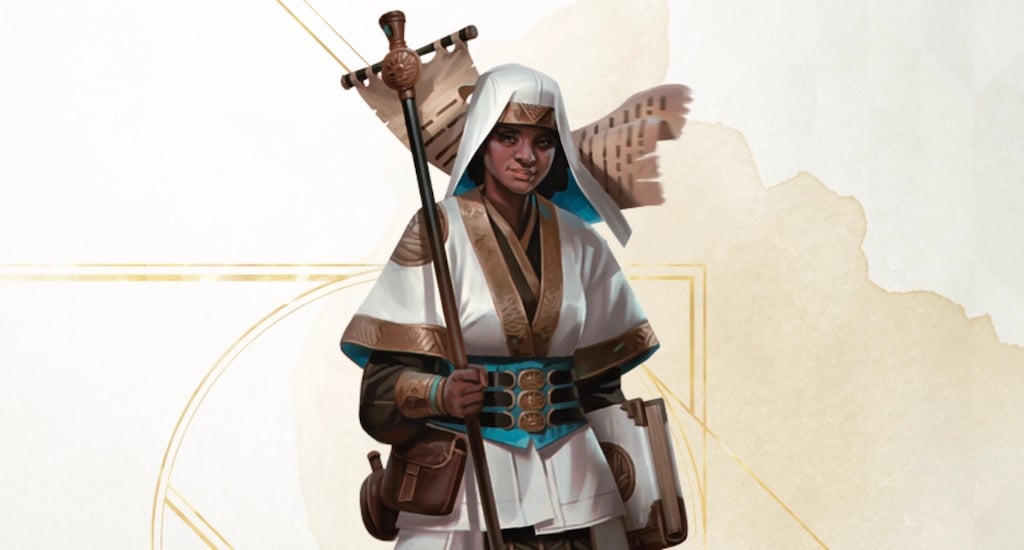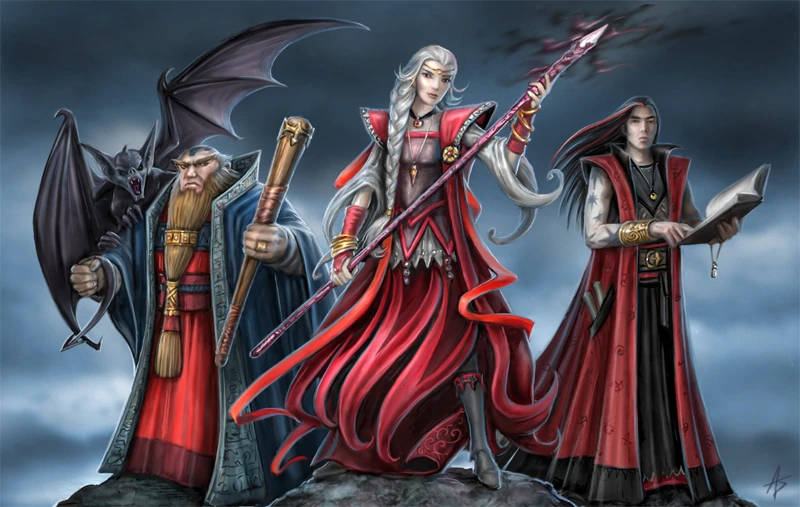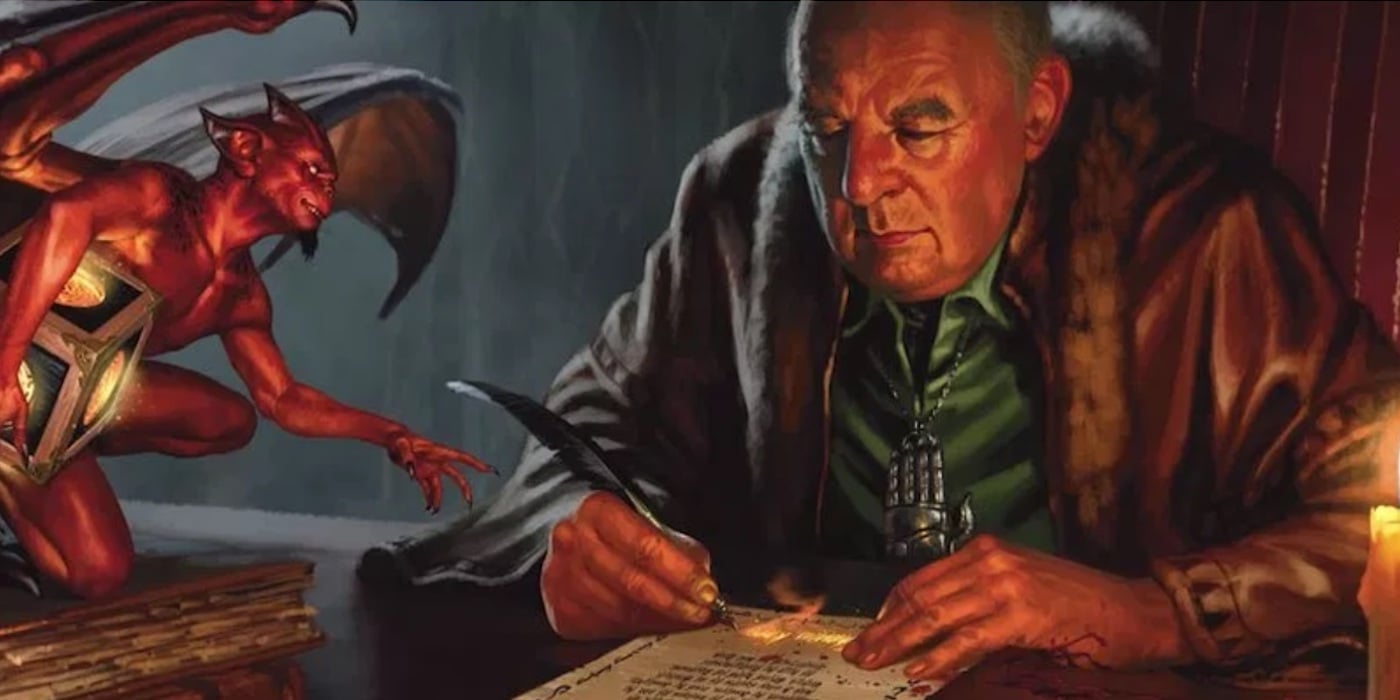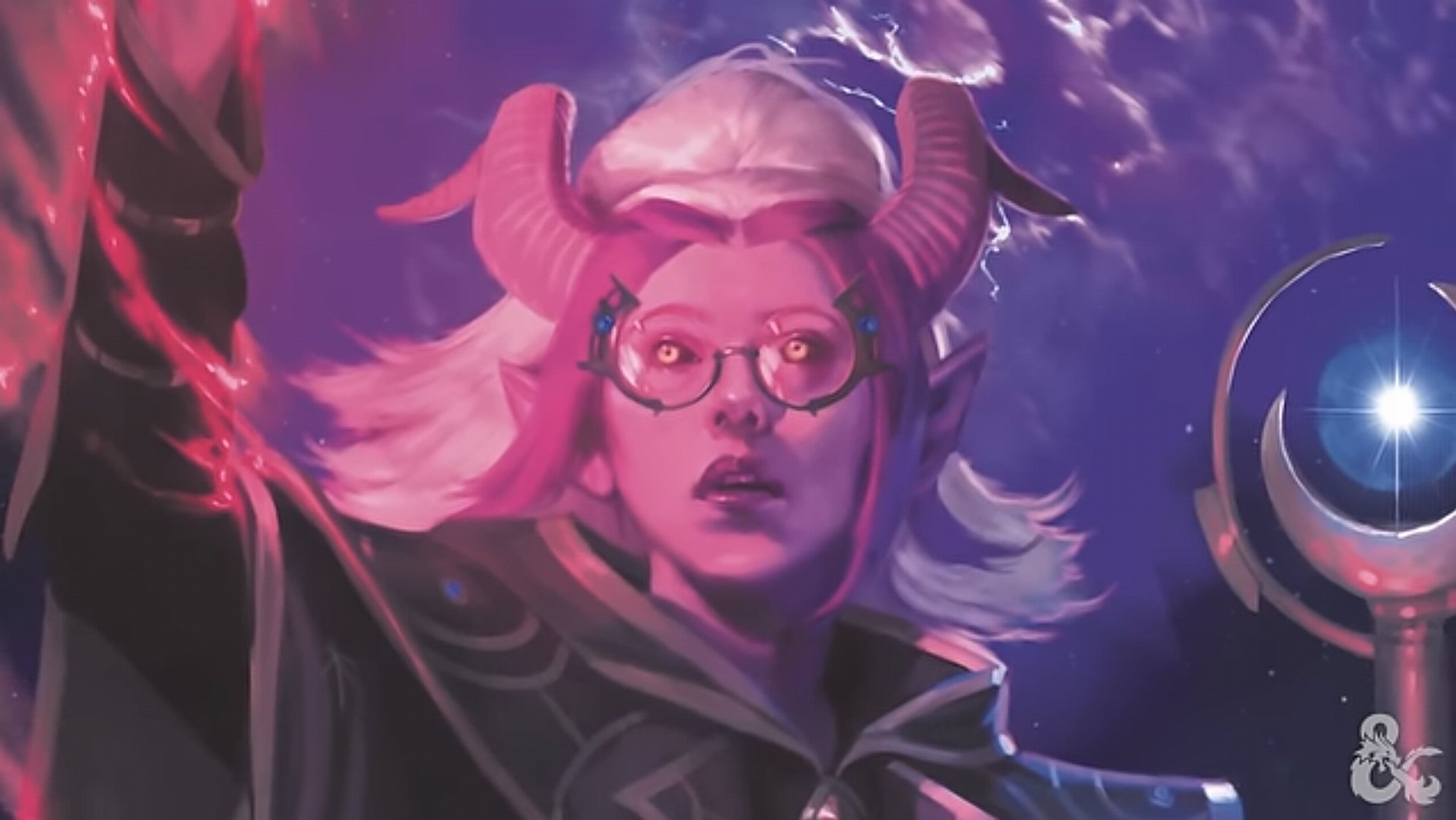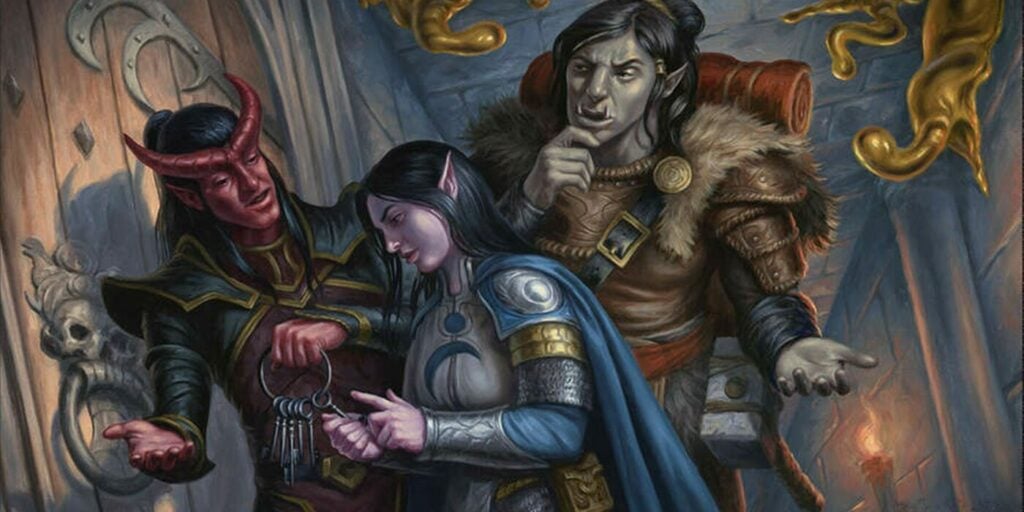D&D Guide: How to Play a Wizard – Now With 5.5E
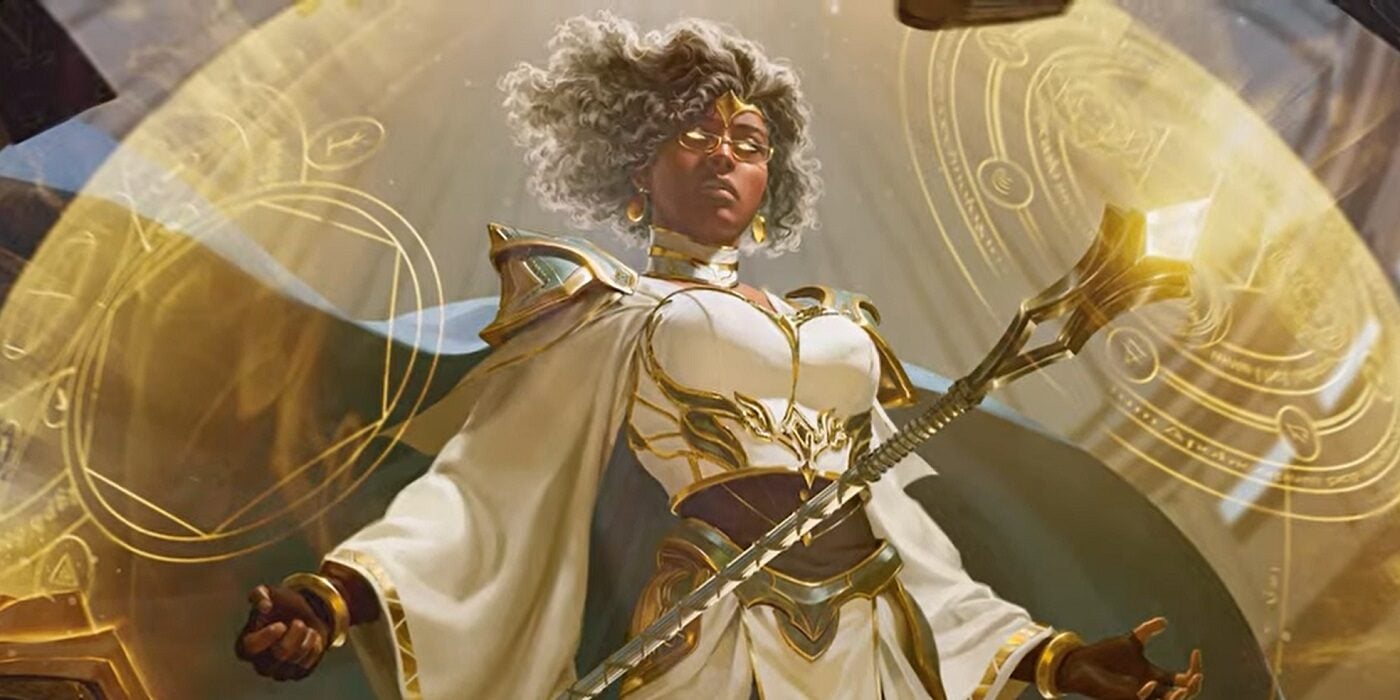
Wizards are one of D&D’s most iconic classes, be it 5E or 5.5E. But all those spells can be daunting—we’re here to help you get started.
Now that the new Player’s Handbook has been out, we’re updating the guides with the new 5.5E rules. So if you’re looking to play a Wizard with the 2024 rules, scroll on down to the bottom for the new content!
When it comes to Dungeons & Dragons, Wizards are masters of all things arcane. They have access to more spells and can learn and do more with magic than just about anyone else. Except for maybe Clerics, but that’s beside the point.
The fact of the matter is that 5E Wizards are iconic members of any party. There’s a reason the stereotypical party was “Fighter, Cleric, Wizard, Thief” for so many years. These days, even Magic includes Wizards in a “full party”, but it replaces Fighter with Warrior and Thief with Rogue. In 5th Edition, wizards can be an absolute blast to play, but they take a little bit more work to get started.
Spells Spells Spells
Without a doubt, the most versatile of all casters are Wizards. They have such a breadth of spells available and the ability to learn all of them (eventually). That means that a Wizard that has time to prepare for a coming battle will utterly excel—they always have the right tool for the job, whether that’s having some kind of non-combat rituals like Tenser’s Floating Disk, an information-gathering tool like Scrying, or a combat-changing spell like a well placed Fireball.
Wizards in 5E can do it all, and you can build a wizard to do just about everything. It may seem rather complicated, but it’s pretty much all down to what kind of spells you pick. The rest of the wizard toolkit is there to fuel your magic. When you play a wizard, you’re basically building a hand of cards that you can play to deal with any situation, whether that’s by buffing your party or cordoning off enemies so you can pick them apart one by one, or whatever you decide.
But that wealth of choices can be overwhelming. So it’s a good idea to pick a niche and explore from there. You’ll want at least one spell to deal damage and one spell to protect yourself in times of need. If you find yourself dragging, talk to your DM about learning some new spells.
As we said, most of a wizard’s kit is in their spells—even their subclasses help focus the Wizard on doing things with their spells. Unlike most classes, a wizard has nine different subclasses (for each school of magic) and then a couple of extras besides.
Wizard Subclasses
Abjuration is a school that’s all about protection. As such it lends itself to 5E Wizards looking to support their friends in a fight. Arcane Ward is one of the best features out there, allowing you to seize a little bit of magic from each spell that you cast, using the power to give yourself or an ally temporary hit points. Improved Abjuration and Spell Resistance make you that much more resilient at higher levels.
Chronurgy is a school of magic that was introduced in Explorer’s Guide to Wildemount, and it is a powerful subclass. It allows you to cause enemies to fail or your allies to succeed, as well as provide access to the widest range of spells. Chronurgy wizards mean absolute business.
Conjuration is the make your GM hang his head school. With access to summoned creatures and being able to conjure up literally what you need (go Minor Conjuration) you’ll be able to throw a monkey wrench into the well-laid plans of your GM with distressing ease.
Divination is the school that believes you can never know too much, and never be too prepared. It is the school you should take up if you want to be the knowledge hub for your party—it’s also one of the best support subclasses—the whole arcane tradition is worth it for Portent alone which allows you to twice per day guarantee an ally will hit/save, or an enemy will miss/fail. It’s such a rewarding mechanic—rolling 2d20 and saving for a later time of your choosing—because no matter how you roll, you’ll get some fantastic use out of it.
Enchantment is one of the better schools for dealing with a single powerful creature. Features like Hypnotic Gaze let you take out a foe without spending a spell slot. Split Enchantment doubles the potency of your enchantments, letting you take on two creatures for the price of one.
Evocation is a school that’s all about blasting your enemies. But like, carefully. There are some powerful abilities in this subclass. This includes the ability to drop an AoE on a bunch of foes without worrying about hitting your friends. Thanks, sculpt spell! And One per day being able to decide a spell is going to deal maximum damage is pretty incredible. More so because you can spend HP to gain the benefit of this ability again and again throughout your adventuring day.
Illusion is one of the best Wizard schools. You can redefine reality for a while—there are all kinds of tricks you can do with this class. Being able to reprogram your illusions thanks to Malleable Illusion is amazing. Get that much more mileage out of those precious spell slots. Pull off old tricks like creating an illusory boulder and hiding inside it while firing arrows at your enemies with nigh impunity.
Wait, There’s More!
Necromancy is better at being an evil cleric than the actual evil clerics. If you know that you are going to be dealing with the undead, you need a necromancer. You’ll gain the ability to buff based on whatever stitched-together monstrosity you’re calling your friend this time.
Transmutation is another excellent battlefield control school. Transmutation has a lot of the spells like Polymorph, which can help turn the tide of a fight. If you want to rearrange the battlefield, this one is the school for you.
But let’s not forget War Wizards out of Xanathar’s Guide to Everything—which showcases the Wizard’s ability to take to a fight. You’ll want to be casting concentration spells to gain a boost to your armor class. This is great because you’ll also want to be close to the enemy spellcasters out there. That way, you can juice up your combat spells with some power surges.
Or the Bladesinger which is most recently reprinted in Tasha’s Cauldron of Everything. This is a much more defensive spellcaster. You’ll have the ability to “bladesing” which makes it harder to hit you. It also gives you the occasional melee attack.
Finally, the Order of Scribes wizard is the ultimate wizard. They put everything they have into a magical book that advises them and empowers them. Their biggest move is their ability to swap out damage types of some of their spells. That lets you get around damage resistances and immunities. The rest is gravy.
Wizard Tips & Tricks
One of the weirdest things to learn about Wizards is that it’s not super hard to get a high armor class. This comes from their ability to wield a shield and cast the spell Shield on top of everything else. Often, a Wizard will pick up Heavy Armor proficiency to be able to hit AC 26 without even trying hard. Layer on elements like War Magic, and you can be surprisingly good in a fight.
But often, the best tips and tricks come down to your spells. Your best options, by far, are going to be spells that change the weight of numbers in a fight. Sometimes, this can mean doing damage, but more often than not, it’s about incapacitating or isolating enemies.
Spells like Sleep work very well early on, shutting down enemies so that they can’t gang up on you. And instead, you can gang up on the few who remain awake. Later spells like Hypnotic Pattern and Wall of Force can help shut off entire encounters.
Creating a Wizard can be daunting. But with the right kind of focus on your initial spells, you’ll be set up for your first few levels. Then you can transition from no hit points to running the show. The class can be incredibly rewarding to play, and when done right, they make everyone in the party shine.
How to Play a Wizard In 5.5E – The More Things Change, The More They Stay the Same
Wizards in 5.5E have a lot of similarities to their 5E counterparts. They still have most of their class power tied up in casting spells. They still need spellbooks and components. And weirdly enough, Wizards are still one of the better candidates for wearing heavy armor – and with the right stats, can do so without interrupting their spell progression.
But, don’t let those similarities fool you. In 5.5E, more than ever, there’s a lot of nuance and variety to the ways you can play your Wizard. There are dozens of playstyles, and Wizards, turns out, can do most of them. Especially with a new Bladesinger on the way.
But the most important thing for any 5.5E Wizard to be aware of, are the new rules for casting spells. To wit: now you can cast spells with a spell slot only once per turn.
“On a turn, you can expend only one spell slot to cast a spell. This rule means you can’t, for example, cast a spell with a spell slot using the Magic action and another one using a Bonus Action on the same turn.”
This means, for instance, you can cast Shield as a reaction when it’s not your turn, and still use your Magic action or a Bonus Action to cast a spell with a spell slot on your turn. But it also means that, if you can cast a spell without a spell slot, on your turn then you can also cast a spell with a spell slot on your turn. Which is important to know, because there are a lot of ways to cast a spell without a slot:
- Cast a Cantrip (they don’t take a spell slot, but usually take your Action)
- Cast a Ritual Spell as a Ritual
- Use a special feature, for instance from a feat or a species or a subclass
These kinds of features are usually clear about not taking a spell slot. So be aware of those—you don’t want to waste your opportunities!
The Rules of Magic – Important Things to Know
Another important thing to know is that many things about spells are a lot clearer now. For instance, if a target is aware that a spell has been cast on them. This is an argument that often comes up when trying to cast something that you might want to hide.
Now it’s clear, in 5.5E, a target isn’t aware a spell has been cast on them unless it has an obvious effect or explicitly says so in the spell description. Charm Person and Detect Thoughts spring to mind as two examples of spells that explicitly state the target is aware of the spell’s effect. But Suggestion, on the other hand, doesn’t:
“Unless a spell has a perceptible effect, a creature doesn’t know it was targeted by the spell. An effect like lightning is obvious, but a more subtle effect, such as an attempt to read thoughts, goes unnoticed unless a spell’s description says otherwise.”
On top of that, there are many changes to the way spells work. You might have experienced it in a home game, but spells like a Cleric’s Spirit Guardians do damage whenever a creature enters the space now, instead of when it starts or enters its turn there. While Wizards don’t have Spirit Guardians, they do have a number of spells like it. It feels a little like a cop out to say “read the descriptions of your spells closely and preferably more than once” but, honestly that’s what I do when I’m playing a Wizard.
A big part of playing a Wizard in 5E is having the right tool for the job. Played carefully, a Wizard can have a solution to almost any challenge. But you have to know what your character is capable of. And every Wizard is so different, because their spellbooks are so completely customizable. So immerse yourself in your character, and study that spellbook.
Subclasses That Take You to School
When it comes to subclasses, the Wizard list has been pared down to a mere four. Though each of these subclasses have a little more power to them now. Starting with the defensive-minded Abjurer.
This Wizard’s magical Arcane Ward is one of the best defensive features a spellcaster can get. Whenever you cast an abjuration spell you can create a ward that gives your a pool of temporary hit points equal to twice your Wizard level plus your Intelligence modifier.
You can refill the pool by either casting an abjuration spell, or you can spend a Bonus Action to spend a spell slot to give your Ward the same amount of HP, which is an important new tool, because it means you can heal your ward on your turn even if you cast another spell. At higher levels, you can shield others, and get even better at Dispel Magic and Counterspell. A solid option for anyone playing defense.
Diviners and Evokers play pretty much as they always have. With the exception of adding new spells of the chosen school for free. But Illusionists have some fun new stuff going on. Including the ability to cast the Minor Illusion cantrip as a Bonus Action. Which means that you can still use your Magic Action to cast a spell with a spell slot.
You also gain the ability to summon illusory creatures without a spell slot, and at 10th level you can do the Naruto illusory double substitution trick as a reaction.
All in all, Wizards are still one of the more powerful classes in the game!
Happy adventuring!



